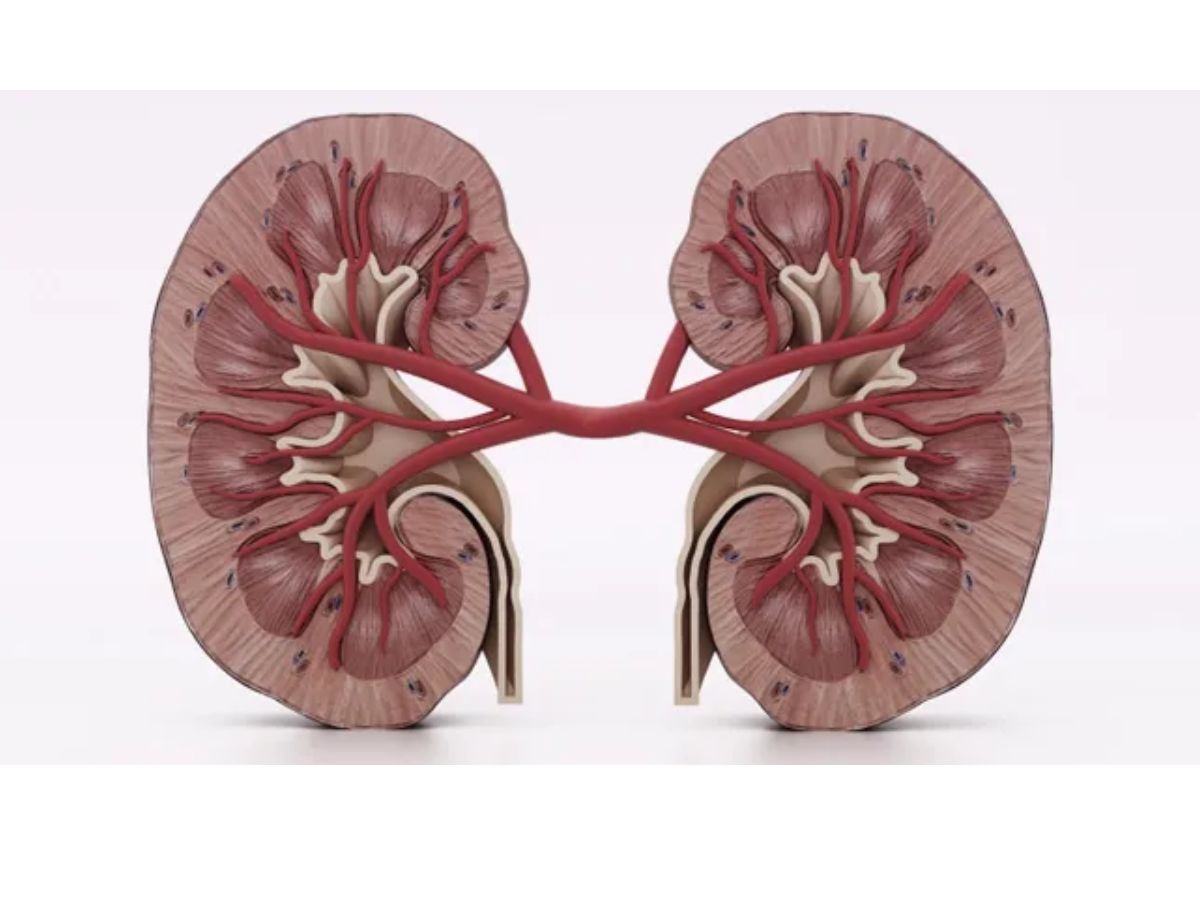
What is Chromophobe Renal Carcinoma? Chromophobe Renal Cell Carcinoma (ChRCC) is a rare type of kidney cancer, making up about 5% of all kidney cancer cases. Originating from the cells lining the kidney's small tubules, ChRCC typically appears in people around their 60s and affects men and women equally. Unlike other kidney cancers, ChRCC has a lower risk of spreading to other parts of the body. Its cells are large with pale cytoplasm and dark nuclei, often showing a unique "pericellular clearing." While generally less aggressive, certain factors like tumor size and specific genetic mutations can influence its behavior and treatment options.
Key Takeaways:
- Chromophobe Renal Cell Carcinoma (ChRCC) is a rare kidney cancer, affecting both men and women equally. It has unique genetic features and a generally favorable prognosis, but certain factors can influence outcomes.
- Understanding ChRCC's clinical behavior, genetic characteristics, and treatment options can help in effectively managing this rare type of kidney cancer. Early detection and personalized treatment strategies are key for favorable outcomes.
What is Chromophobe Renal Cell Carcinoma?
Chromophobe Renal Cell Carcinoma (ChRCC) is a rare type of kidney cancer. Understanding its characteristics, diagnosis, and treatment can help in managing this condition effectively.
-
Definition and Prevalence: ChRCC originates from cells lining the kidney's small tubules. It accounts for about 5% of all kidney cancer cases, making it less common than other types like clear cell RCC.
-
Demographics: Typically diagnosed in the sixth decade of life, ChRCC affects men and women equally. Age and gender don't significantly influence the risk.
Histopathology and Diagnosis
Histopathology refers to the microscopic examination of tissue to study the manifestations of disease. For ChRCC, this is crucial for accurate diagnosis.
-
Histopathology: ChRCC cells are large with pale cytoplasm and small, dark nuclei. The distinctive "pericellular clearing" around cell borders is a hallmark feature.
-
Diagnostic Criteria: Diagnosis relies on histopathological examination. Guidelines from the International Union Against Cancer (UICC) and the American Joint Committee on Cancer (AJCC) are used, along with the Heidelberg Classification System.
Clinical Behavior and Risk Factors
Understanding how ChRCC behaves clinically and identifying risk factors can help in managing the disease.
-
Clinical Behavior: Generally considered a low-malignant tumor, ChRCC has a 5-6% risk of metastasis, which is lower than clear cell RCC.
-
Risk Factors: Increased tumor size and sarcomatoid differentiation are significant risk factors. Sarcomatoid differentiation can alter the clinical course and treatment outcomes.
Genetic Characteristics
ChRCC has unique genetic features that differentiate it from other types of renal cell carcinoma.
-
Genetic Characteristics: ChRCC shows a low rate of somatic mutation, with three times fewer mutations than clear cell RCC. It originates from distal kidney regions, unlike clear cell RCC, which arises in proximal tissue.
-
Tumor Suppressor Genes: TP53 and PTEN are frequently mutated in ChRCC. Structural rearrangements of the TERT gene promoter may also drive the cancer's development.
Family History and Genetic Disorders
Family history and genetic disorders can play a role in the development of ChRCC.
- Family History: ChRCC can be associated with Birt-Hogg-Dubé syndrome, a rare genetic disorder that increases the risk of developing ChRCC and other kidney tumors.
Treatment Options
Treatment for ChRCC primarily involves surgical resection, but other options are available for advanced cases.
-
Surgical Treatment: Nephrectomy, or kidney removal, is the primary treatment. Depending on the tumor's size and location, a partial or radical nephrectomy may be performed.
-
Targeted Therapies: For metastatic ChRCC, targeted therapies like sunitinib and sorafenib are effective. These drugs target specific molecular pathways involved in tumor growth.
Prognosis and Prognostic Factors
The prognosis for ChRCC is generally favorable, but certain factors can influence outcomes.
-
Prognosis: Early-stage diagnosis leads to a favorable prognosis due to the tumor's low malignant potential. However, high-risk features like sarcomatoid differentiation can alter the prognosis.
-
Prognostic Factors: Tumor size, histological subtype, and sarcomatoid differentiation are key prognostic factors. A novel two-tiered grading scheme has been proposed to improve prognostic accuracy.
Metastatic Disease and Genomic Landscape
Though rare, metastatic ChRCC requires different management strategies. Understanding its genomic landscape can aid in treatment.
-
Metastatic Disease: Metastatic ChRCC is rare but can occur, especially with high-risk features. Targeted therapies may help manage metastatic disease, though the prognosis remains poor compared to localized disease.
-
Genomic Landscape: Next-generation sequencing has revealed specific genetic alterations in ChRCC, including deletions of RB1 and ERBB4 genes. These insights help distinguish ChRCC from renal oncocytoma.
MicroRNA Expression and Energy Production Pathways
MicroRNA expression and energy production pathways offer insights into ChRCC's unique biology.
-
MicroRNA Expression: MicroRNA profiles can predict clinical phenotypes and prognosis in ChRCC, aiding in personalized treatment strategies.
-
Energy Production Pathways: ChRCC exhibits enriched metabolic pathways related to mitochondrial energy production, unlike clear cell RCC, which suppresses these pathways.
Incidental Detection and Microenvironmental Factors
Incidental detection often leads to early diagnosis, while microenvironmental factors influence tumor behavior.
-
Incidental Detection: Many ChRCC cases are detected incidentally during imaging for other reasons, leading to early diagnosis and a favorable prognosis.
-
Microenvironmental Factors: The tumor microenvironment plays a significant role in ChRCC's development and progression. Specific microenvironmental factors can influence the tumor's clinical behavior.
Future Research Directions
Ongoing research aims to improve understanding and treatment of ChRCC.
-
Future Research Directions: Further research is needed to elucidate the genetic basis of sporadic ChRCC, explore new therapeutic targets, and develop personalized treatment strategies based on molecular characteristics.
-
Histomorphologic Characteristics: The tumor's appearance under the microscope, including cellular and architectural features, helps differentiate ChRCC from other RCC types.
-
Evaluation of Prognostic Parameters: Studies have identified factors like tumor size and histological subtype that influence clinical outcomes. A novel two-tiered grading scheme has been proposed for better prognostic accuracy.
-
Family History and Genetic Disorders: Birt-Hogg-Dubé syndrome increases the risk of developing ChRCC and other kidney tumors. The genetic basis of sporadic ChRCC remains poorly understood.
-
Surgical Treatment: Nephrectomy is the primary treatment. Depending on the tumor's size and location, a partial or radical nephrectomy may be performed.
-
Targeted Therapies: Sunitinib and sorafenib are effective for managing metastatic ChRCC, targeting specific molecular pathways involved in tumor growth.
Key Takeaways on Chromophobe Renal Carcinoma
Chromophobe Renal Cell Carcinoma (ChRCC) stands out as a rare but distinct type of kidney cancer. It accounts for about 5% of all kidney cancer cases. Typically diagnosed in the sixth decade of life, ChRCC affects men and women equally. Its hallmark features include large cells with pale cytoplasm and small, dark nuclei. The tumor's low risk of metastasis and indolent nature often lead to a favorable prognosis. Surgical resection remains the primary treatment. Genetic factors like mutations in TP53 and PTEN play a crucial role in its development. While ChRCC can be part of genetic disorders like Birt-Hogg-Dubé syndrome, sporadic cases are less understood. Early detection, often incidental, significantly improves outcomes. Ongoing research aims to uncover more about its genetic basis and develop targeted therapies. Understanding these aspects can help manage ChRCC more effectively.
Frequently Asked Questions
Was this page helpful?
Our commitment to delivering trustworthy and engaging content is at the heart of what we do. Each fact on our site is contributed by real users like you, bringing a wealth of diverse insights and information. To ensure the highest standards of accuracy and reliability, our dedicated editors meticulously review each submission. This process guarantees that the facts we share are not only fascinating but also credible. Trust in our commitment to quality and authenticity as you explore and learn with us.


